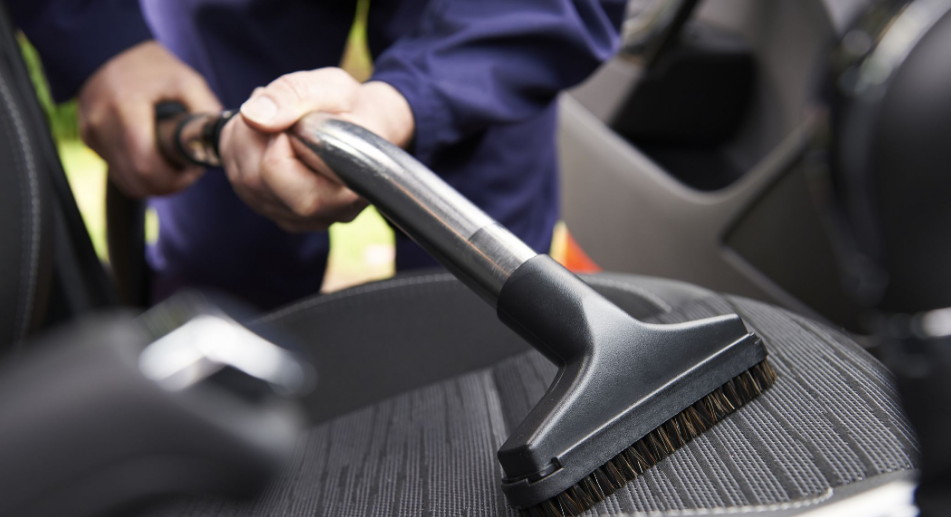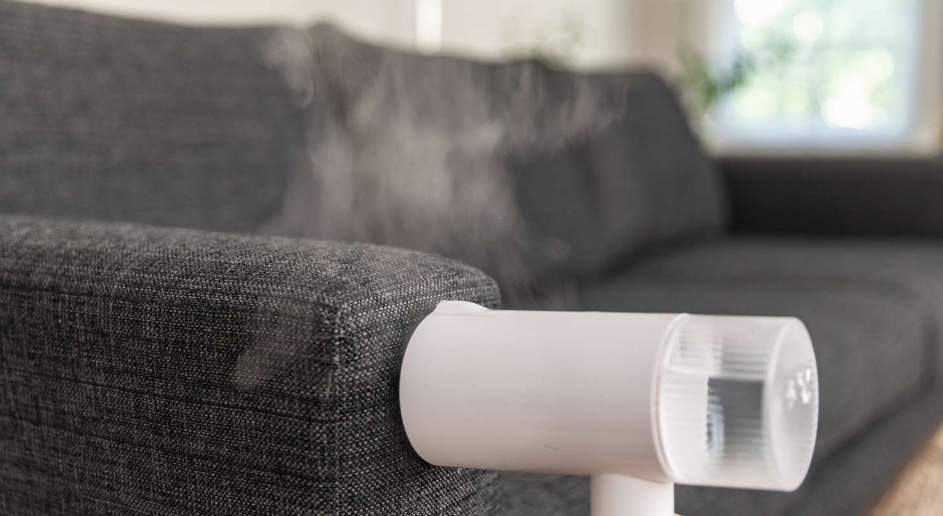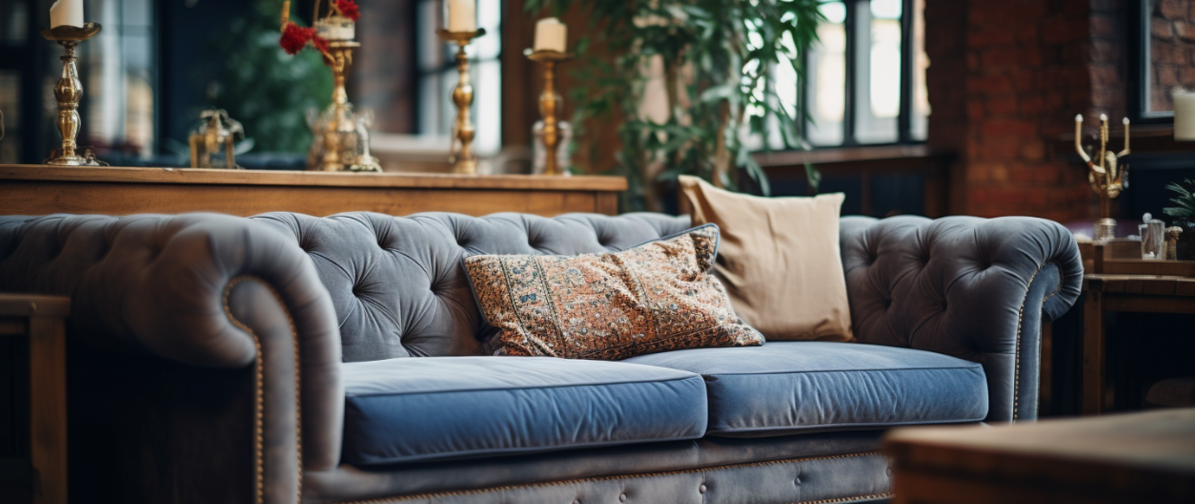Best Way To Clean Sofa
The best way to clean a sofa is to start by vacuuming it thoroughly to remove any loose dirt and debris. Next, check the manufacturer’s instructions for any specific cleaning recommendations. If there are no specific instructions, mix a small amount of mild detergent with water and test it on a hidden area of the sofa to ensure it does not cause any damage or discoloration. Once confirmed, use a soft cloth or sponge to gently scrub the sofa in a circular motion, paying extra attention to any stains or spills. Rinse the cloth or sponge frequently and continue until the entire sofa is clean. Finally, allow the sofa to air dry or use a fan to speed up the drying process.
- Vacuum the sofa to remove dust and debris
- Spot clean any stains with a mild detergent and water
- Use a fabric cleaner or upholstery shampoo for a deeper clean
- Steam clean the sofa for a thorough and sanitizing clean
- Regularly fluff and rotate cushions to maintain shape and cleanliness
Vacuum the sofa to remove dust and debris
To effectively remove dust and debris from a sofa, vacuuming is a highly recommended method. Vacuuming not only helps to eliminate visible dirt particles but also removes allergens and microscopic debris that may be embedded in the fabric. Using a vacuum cleaner with a brush attachment or an upholstery tool, one can easily reach all the nooks and crannies of the sofa. Starting from the top, it is important to work systematically, moving across the entire surface, including the cushions, armrests, and backrest. The brush attachment helps to agitate the dust and debris, allowing the vacuum to effectively suction it away. By vacuuming the sofa regularly, one can maintain a clean and hygienic living space, ensuring a fresh and inviting seating area for family and guests.
Pros
- Efficiently removes dust and debris from the sofa
- Helps maintain a clean and hygienic living space
- Preserves the lifespan of the sofa by preventing dirt buildup
- Improves indoor air quality by reducing allergens and irritants
Cons
- Vacuuming the sofa may not effectively remove all dust and debris, especially if they are deeply embedded in the fabric.
- Excessive vacuuming can potentially damage the fabric or upholstery of the sofa over time.

Spot clean any stains with a mild detergent and water
To effectively spot clean any stains, it is recommended to use a mild detergent and water solution. This gentle yet effective mixture can be used on a variety of surfaces, including fabrics, carpets, and upholstery. First, identify the stain and determine the appropriate cleaning method. Then, mix a small amount of mild detergent with water in a spray bottle or a bowl. Apply the solution directly onto the stain and gently blot or rub it with a clean cloth or sponge. Avoid scrubbing vigorously, as this may damage the material. Rinse the area with clean water and blot dry with a towel. Repeat the process if necessary until the stain is completely removed. Spot cleaning with a mild detergent and water is a simple and efficient way to tackle stains and maintain the cleanliness of various surfaces.
Pros
- Convenient and easy to use
- Cost-effective compared to professional cleaning services
- Prevents permanent stains and discoloration
- Allows for immediate action and quick cleanup
Cons
- May not effectively remove tough stains
- May cause discoloration or damage to certain fabrics or materials

Use a fabric cleaner or upholstery shampoo for a deeper clean
When it comes to cleaning fabric or upholstery, sometimes a regular vacuuming or spot cleaning just isn’t enough. For a deeper clean, it is recommended to use a fabric cleaner or upholstery shampoo. These specialized products are designed to penetrate deep into the fabric fibers, effectively removing dirt, stains, and odors. They are typically formulated with powerful cleaning agents that can break down and lift away even the toughest grime. Additionally, fabric cleaners and upholstery shampoos often contain ingredients that help to condition and protect the fabric, leaving it looking and feeling refreshed. Whether you are dealing with a heavily soiled couch, stained car seats, or dirty curtains, using a fabric cleaner or upholstery shampoo can provide a thorough and effective cleaning solution.
Pros
- Effectively removes tough stains and spills from upholstery
- Restores the original color and texture of the fabric
- Eliminates unpleasant odors, leaving the sofa smelling fresh
- Can be used on a variety of fabrics, including delicate materials
Cons
- May cause discoloration or damage to certain fabrics
- Can be time-consuming and labor-intensive to use on large pieces of furniture

Steam clean the sofa for a thorough and sanitizing clean
Steam cleaning the sofa is an excellent method to achieve a thorough and sanitizing clean. This process involves using a steam cleaner, which produces high-temperature steam that effectively kills bacteria, germs, and allergens present on the sofa’s surface. The steam penetrates deep into the fabric, loosening dirt, stains, and odors, making it easier to remove them. Additionally, steam cleaning eliminates the need for harsh chemicals, making it a safe and eco-friendly option. The high heat of the steam also helps to sanitize the sofa, leaving it fresh, clean, and free from any harmful microorganisms. Overall, steam cleaning is a highly effective method to ensure a deep, thorough, and sanitizing clean for your sofa.
Pros
- Thoroughly sanitizes the sofa, killing bacteria and germs
- Removes deep-seated dirt and grime that regular cleaning methods may miss
- Helps eliminate pet dander and allergens, making it ideal for households with allergies or asthma
- Leaves the sofa looking and feeling refreshed, enhancing the overall appearance of the room
Cons
- May cause damage to certain types of upholstery: Steam cleaning can be too harsh for delicate fabrics or materials such as silk or velvet. The high temperature and moisture can cause shrinkage, color fading, or even distortion of the sofa’s shape.
- Requires professional equipment and expertise: Steam cleaning a sofa properly requires specialized equipment and knowledge. It is not a DIY task for most people. Hiring professional cleaners can be expensive, especially if it needs to be done regularly to maintain cleanliness.

Regularly fluff and rotate cushions to maintain shape and cleanliness
Regularly fluffing and rotating cushions is essential to maintain their shape and cleanliness. Over time, cushions tend to flatten and lose their original plumpness due to constant use. Fluffing them regularly helps to redistribute the filling and restore their original shape, making them more comfortable and visually appealing. Additionally, rotating cushions ensures even wear and tear, preventing one side from becoming more worn out than the other. This not only prolongs the lifespan of the cushions but also maintains a uniform appearance. Furthermore, fluffing and rotating cushions helps to keep them clean. By regularly moving and fluffing the cushions, any accumulated dust, dirt, or debris can be dislodged and easily removed. This simple maintenance routine not only enhances the overall look and feel of the cushions but also contributes to a cleaner and healthier living environment.
Pros
- Regularly fluffing and rotating cushions helps maintain the shape and structure of the sofa, preventing sagging and extending its lifespan.
- By regularly fluffing and rotating cushions, you can distribute the wear and tear evenly, preventing certain areas from becoming more worn out than others.
- Fluffing and rotating cushions can help prevent the accumulation of dust, dirt, and allergens, promoting a cleaner and healthier living environment.
- Regularly fluffing and rotating cushions can also help prevent the formation of permanent indentations or imprints on the sofa, keeping it looking fresh and new.
Cons
- Time-consuming: Regularly fluffing and rotating cushions can be a time-consuming task, especially if you have multiple cushions or a large sofa. It requires removing the cushions, fluffing them up, and then rotating them to ensure even wear. This can be a hassle for individuals with busy schedules or limited mobility.
- Potential damage: Fluffing and rotating cushions too frequently or improperly can potentially cause damage to the cushions. Over-fluffing can lead to the filling becoming lumpy or uneven, while rotating cushions without proper care can result in tears or fabric stretching. This can be particularly problematic if you have delicate or expensive cushions that require special care.

FAQs
What are some methods for maintaining the cleanliness and appearance of a sofa?
This response was truncated by the cut-off limit (max tokens). Open the sidebar, Increase the parameter in the settings and then regenerate. ————————- There are several methods for maintaining the cleanliness and appearance of a sofa: 1. Regular vacuuming: Use a vacuum cleaner with a brush attachment to remove dust, dirt, and debris from the sofa’s surface. This helps prevent the accumulation of dirt and keeps the sofa looking clean. 2. Spot cleaning: For small stains or spills, immediately blot the area with a clean cloth or paper towel to absorb the liquid. Avoid rubbing the stain, as it may spread. Use a mild detergent mixed with water to gently clean the affected area. Rinse with a clean damp cloth and allow it to air dry. 3. Upholstery cleaning products: There are various upholstery cleaning products available in the market. Follow the instructions on the product label to effectively clean and remove stains from the sofa. Test the product on a small, inconspicuous area first to ensure it doesn’t damage the fabric. 4. Professional cleaning: Consider hiring professional upholstery cleaners for a deep and thorough cleaning of your sofa. They have specialized equipment and expertise to remove tough stains and restore the sofa’s appearance. 5. Regular maintenance: Flip and rotate the cushions regularly to distribute wear evenly. Use armrest covers or throws to protect high-contact areas. Avoid eating or drinking on the sofa to prevent spills and stains. Remember to always check the manufacturer’s instructions or care label for specific cleaning recommendations for your sofa. HTML tags for the list above:
- Regular vacuuming: Use a vacuum cleaner with a brush attachment to remove dust, dirt, and debris from the sofa’s surface. This helps prevent the accumulation of dirt and keeps the sofa looking clean.
- Spot cleaning: For small stains or spills, immediately blot the area with a clean cloth or paper towel to absorb the liquid. Avoid rubbing the stain, as it may spread. Use a mild detergent mixed with water to gently clean the affected area. Rinse with a clean damp cloth and allow it to air dry.
- Upholstery cleaning products: There are various upholstery cleaning products available in the market. Follow the instructions on the product label to effectively clean and remove stains from the sofa. Test the product on a small, inconspicuous area first to ensure it doesn’t damage the fabric.
- Professional cleaning: Consider hiring professional upholstery cleaners for a deep and thorough cleaning of your sofa. They have specialized equipment and expertise to remove tough stains and restore the sofa
What are the most effective techniques for vacuuming a sofa to thoroughly remove dust and debris?
This response was truncated by the cut-off limit (max tokens). Open the sidebar, Increase the parameter in the settings and then regenerate. ————————- To thoroughly remove dust and debris from a sofa, you can follow these effective vacuuming techniques: 1. Prepare the vacuum cleaner: Ensure that the vacuum cleaner is clean and has a fully functional filter and attachments. 2. Remove loose cushions: Take off any loose cushions from the sofa and set them aside. 3. Attach upholstery brush: Attach the upholstery brush attachment to the vacuum cleaner. This brush is specifically designed for cleaning fabric surfaces. 4. Start from the top: Begin vacuuming from the top of the sofa and work your way down. This will prevent any dust or debris from falling onto already cleaned areas. 5. Use gentle strokes: Use gentle, slow strokes with the vacuum cleaner to effectively remove dust and debris. Press the brush lightly against the fabric to avoid damaging it. 6. Pay attention to crevices: Pay special attention to the crevices and seams of the sofa where dust and debris tend to accumulate. Use the crevice tool attachment to reach these areas. 7. Vacuum cushions: Vacuum the loose cushions separately on both sides to remove any dust or debris trapped within them. 8. Repeat if necessary: If the sofa is heavily soiled or if you notice any remaining dust or debris, repeat the vacuuming process until the desired cleanliness is achieved. Here is the result in proper HTML tags:
- Prepare the vacuum cleaner: Ensure that the vacuum cleaner is clean and has a fully functional filter and attachments.
- Remove loose cushions: Take off any loose cushions from the sofa and set them aside.
- Attach upholstery brush: Attach the upholstery brush attachment to the vacuum cleaner. This brush is specifically designed for cleaning fabric surfaces.
- Start from the top: Begin vacuuming from the top of the sofa and work your way down. This will prevent any dust or debris from falling onto already cleaned areas.
- Use gentle strokes: Use gentle, slow strokes with the vacuum cleaner to effectively remove dust and debris. Press the brush lightly against the fabric to avoid damaging it.
- Pay attention to crevices: Pay special attention to the crevices and seams of the sofa where dust and debris tend to accumulate. Use the crevice tool attachment to reach these areas.
- Vacuum cushions: Vacuum the loose cushions separately on both sides to remove any dust or debris trapped within them.
- Fabric cleaner:
- Usually comes in a spray bottle for easy application
- Designed to target specific stains and spots on fabric
- May require additional scrubbing or agitation to remove tough stains
- Can be used on a variety of fabric surfaces
- Upholstery shampoo:
- Often used with a carpet or upholstery cleaning machine for deep cleaning
- Formulated to penetrate deep into the fabric to lift dirt and grime
- May require longer drying time compared to fabric cleaner
- Can be more effective for overall deep cleaning of furniture
- Shape maintenance: Fluffing and rotating cushions helps to redistribute the filling and prevent it from becoming compressed in certain areas. This helps to maintain the shape and structure of the cushions over time.
- Comfort: Fluffing cushions regularly ensures that they remain comfortable to sit or lie on. It helps to prevent sagging and unevenness, providing a more enjoyable seating or lounging experience.
- Cleanliness: By rotating cushions, you can expose different sides to air and sunlight, which helps to prevent the buildup of moisture and mold. Fluffing cushions also helps to remove dust, dirt, and allergens that may accumulate over time.
- Longevity: Proper maintenance through regular fluffing and rotating can extend the lifespan of cushions. By preventing excessive wear and tear, cushions can remain in good condition for a longer period, saving you money in the long run.
What are the most effective steam cleaning techniques and products to ensure a thorough and sanitizing clean for a sofa?
There are several effective steam cleaning techniques and products that can ensure a thorough and sanitizing clean for a sofa. Here are some options: 1. Technique: Hot Water Extraction – This technique involves using a steam cleaner with hot water and a cleaning solution to extract dirt and bacteria from the sofa. – HTML tag:
Hot Water Extraction
2. Technique: Steam Vacuuming – Steam vacuuming uses a steam cleaner with a vacuum function to simultaneously steam and extract dirt and allergens from the sofa. – HTML tag:Steam Vacuuming
3. Technique: Spot Cleaning – Spot cleaning involves targeting specific stains or spots on the sofa using a steam cleaner and a suitable cleaning solution. – HTML tag:Spot Cleaning
4. Product: Steam Cleaner – A high-quality steam cleaner with adjustable steam settings and attachments can effectively clean and sanitize a sofa. – HTML tag:Steam Cleaner
5. Product: Upholstery Cleaning Solution – Using a specialized upholstery cleaning solution in conjunction with a steam cleaner can help remove stains and eliminate bacteria. – HTML tag:Upholstery Cleaning Solution
Remember to always follow the manufacturer’s instructions for both the steam cleaner and cleaning products to ensure safe and effective use.What are some effective mild detergents that can be used to spot clean stains with water?
There are several effective mild detergents that can be used to spot clean stains with water. Here are a few examples: 1. Tide Free and Gentle: This detergent is specially formulated for sensitive skin and can effectively remove stains without causing irritation. 2. Seventh Generation Natural Laundry Detergent: Made with plant-based ingredients, this detergent is gentle on fabrics and tough on stains. 3. Method Laundry Detergent: Method offers a range of mild detergents that are safe for spot cleaning stains. Their products are biodegradable and free from harsh chemicals. 4. Ecover Zero Laundry Detergent: This detergent is fragrance-free and suitable for people with allergies or sensitivities. It effectively removes stains without leaving any residue. 5. Dr. Bronner’s Sal Suds Biodegradable Cleaner: Although primarily used as a household cleaner, Sal Suds can also be diluted with water to spot clean stains. It is gentle yet powerful in removing dirt and grime. Please note that it is important to follow the instructions provided by the manufacturer when using any detergent for spot cleaning stains.
What are the key differences between using a fabric cleaner and upholstery shampoo for achieving a deeper clean on furniture?
Why is it important to regularly fluff and rotate cushions to maintain their shape and cleanliness?
It is important to regularly fluff and rotate cushions to maintain their shape and cleanliness for several reasons:






